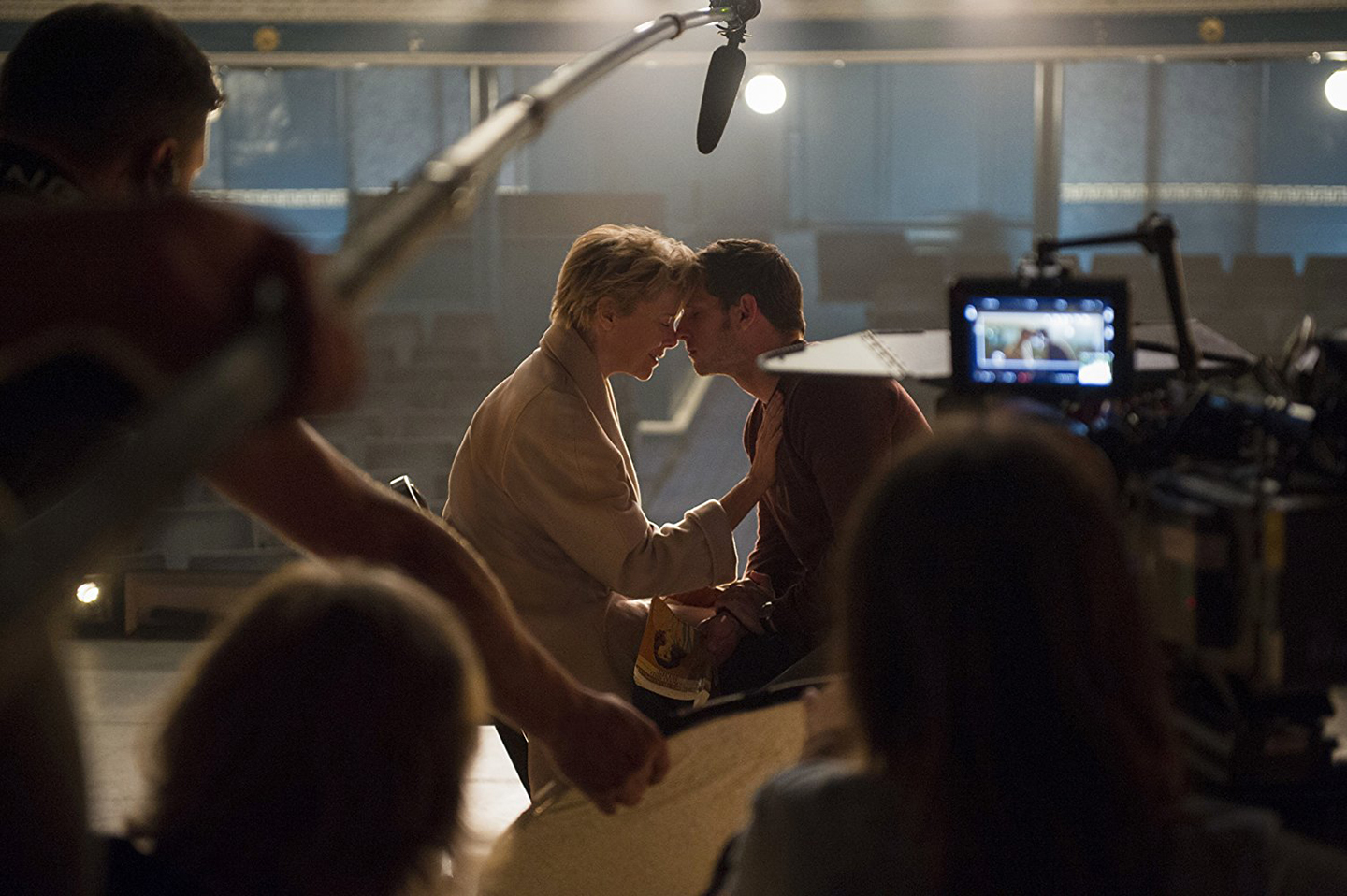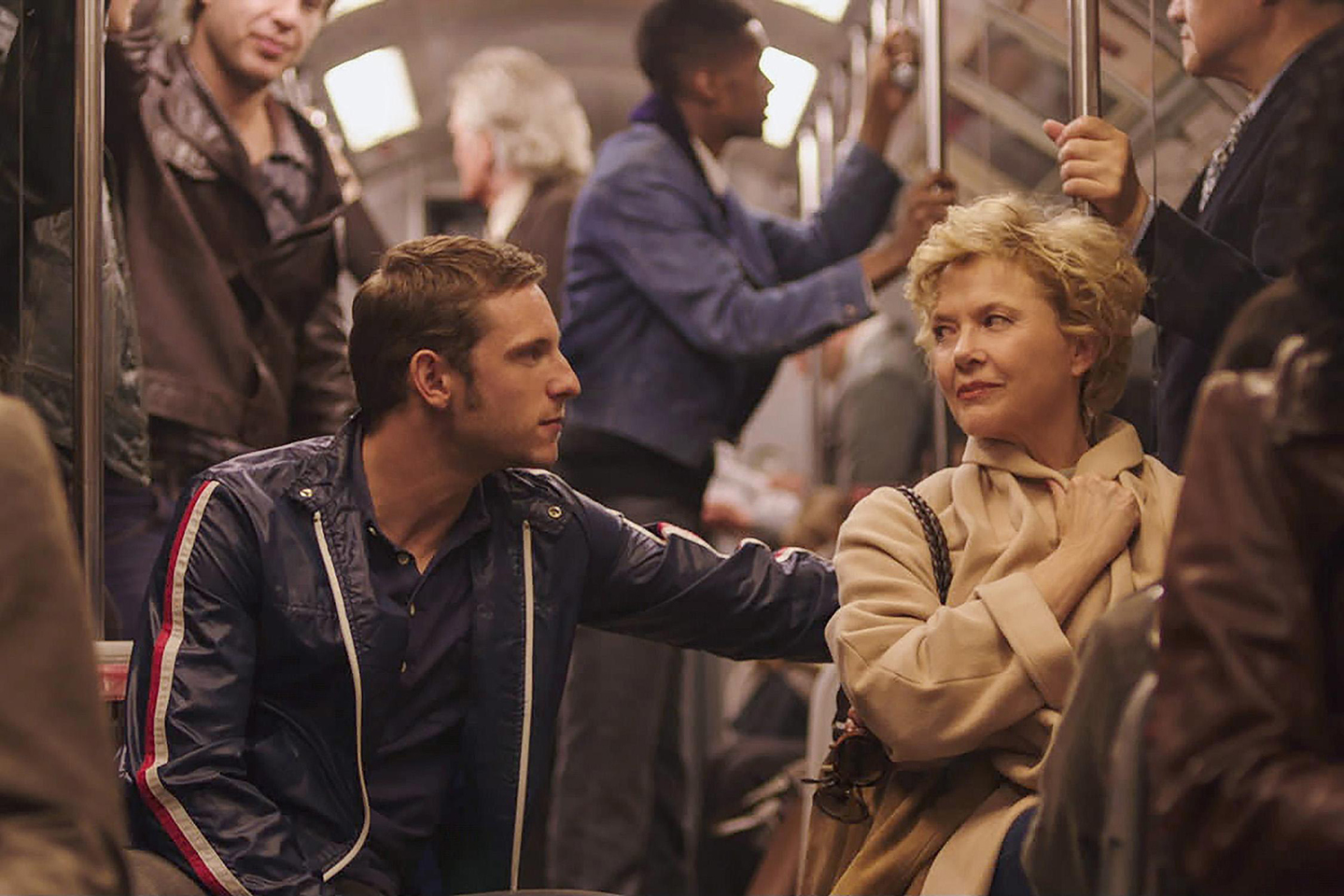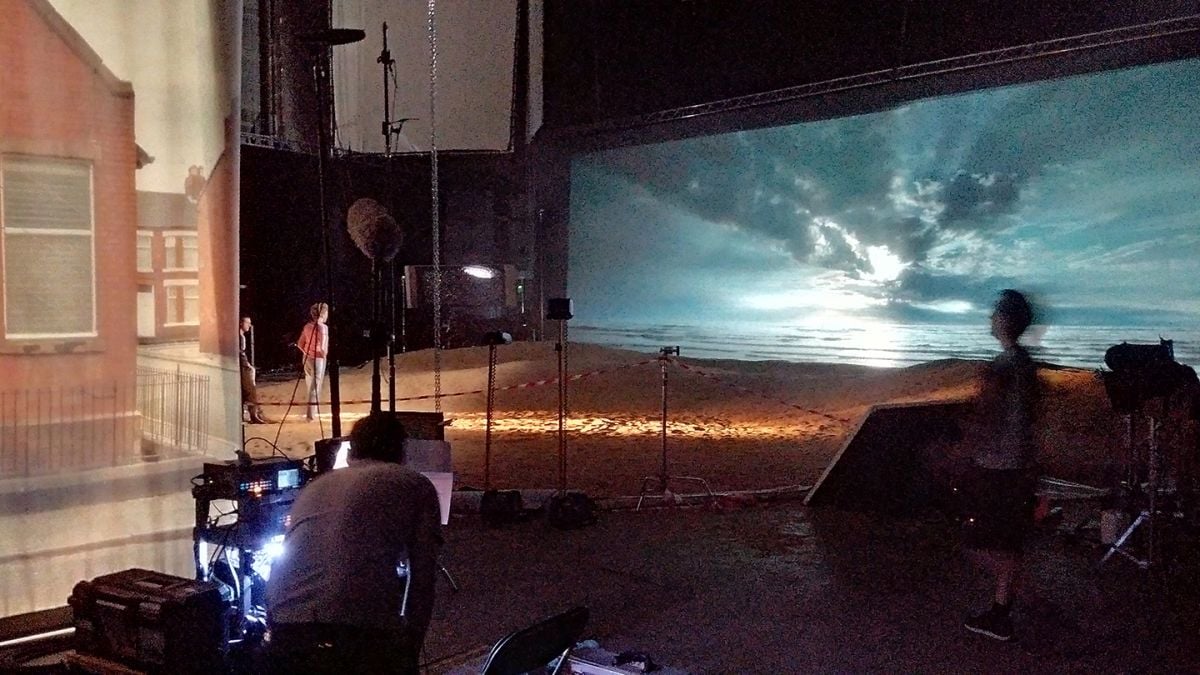
Twilight of Glamour: Film Stars Don’t Die In Liverpool
Cinematographer Ula Pontikos, BSC discusses her approach to shooting this modestly budgeted period drama using a new twist on old-school techniques.
Cinematographer Ula Pontikos, BSC discusses her approach to shooting this modestly budgeted period drama using a new twist on old-school techniques.
By Madelyn Most
Unit Photography by Susie Allnutt, Courtesy of Sony Pictures Classics
Directed by Paul McGuigan, Film Stars Don’t Die In Liverpool depicts the last stages of life for Oscar-winning Hollywood legend Gloria Grahame (The Big Heat, In A Lonely Place, It’s A Wonderful Life). The story picks up as she returns to the family home of her former on-off lover, Peter Turner, in Liverpool, England. As told by the young, struggling thespian, the film weaves the threads of their happy carefree romance that exists in the past, with the more somber reality of the present, in which she struggles to ignore and deny the breast cancer that will ultimately snuff out this once bright, shining star.
Incarnating Turner’s role in a powerful performance is Jamie Bell. Grahame’s role is bravely embodied by Annette Bening, who appears majestic in the many luminous flashbacks, and then visibly lined and aged as the declining cancer patient — photographed with the unsympathetic detail and sharpness of today’s digital cameras.
“We photographed Film Stars like an homage to Hollywood of the past, telling the story of a star from the black-and-white era using old techniques,” describes cinematographer Ula Pontikos, BSC. “The imagery is more like a nostalgic memory, not reality. We went for an enhanced realism that has feeling and is more beautiful than reality.”

Pontikos, who hails from Gdynia, Pomorskie, Poland, is known for her work in the features Second Coming and Lilting, as well as the series Humans and Marcella.
Film Stars Don’t Die In Liverpool has been described as an independent art house film with an absurdly low production budget — which producer Colin Vaines confirms is absolutely true. Yet the scale and ambition of the production — shooting on multiple stages at Pinewood Studios, the “Jewel in the Crown” of all British film studios — is impressive.
The project is a 20-plus-years labor-of-love for producer Barbara Broccoli. She is making this at “home,” in the very studio she grew up on as a child. The one that her father — the much admired, venerated and loved Cubby Broccoli of Eon Productions — kept enlarging for his spectacular series of James Bond adventures.

Vaines adds, “We shot for six weeks in London, Liverpool, and Pinewood with a series of fortunate coincidences, and with many of us forfeiting our salaries up for the greater good of the project. We just had to do things differently. The script has been in development for so long, it was one of those films that just wouldn’t get made.”
As part of this effort, production effects supervisor Lester Dunton, of Dunton Projection FX, built what he believes to be the largest rear-projection screen in the world, within the 22,000 square foot Building 10 at Pinewood, and even applied for recognition by the Guinness Book of World Records.

During AC’s visit to the stage, Dunton was found engrossed in conversation with his two projection technicians while checking a monitor with his DIT. At the back of the stage was a massive 80’ transparent wall of flickering light — the image of a pinkish-ochre sunset sinking into an indigo ocean.
Dunton was in the midst of aligning the crosshairs of a grid from four computerized projectors set to overlap multiple images onto the immense screen. In another area, two more projectors mounted on cherry pickers were being positioned to cast light onto the set before the screen and the actors.
“Doing things for real, in-camera, is fashionable these days,” says Dunton. “Using rear projection has many advantages — the look and feel is better than greenscreen or CGI, and the cost is half or one third of other techniques. The time it takes is shorter, but it’s especially the end results that make it worth it. The actors also like it because they can see it. They are actually in a place and you can see the difference in their performance.”
“I‘ve worked with [director] Paul McGuigan before, on Victor Frankenstein, so I know he understands the value of back projection and doing things properly,” adds Dunton. “We aligned stacks of powerful projectors to cover this giant screen, with imagery composited to a custom 4K x 1K resolution, to achieve his vision.”
Rear projection is not only being used to create locations that would be cost-prohibitive to shoot, but to allow for additional creative control which crafting the film’s unique reality across two eras.
On another part of the stage where a car is being set for shooting, Pontikos is operating an Alexa while her crew flags reflections off the windscreen, all while still listening to Paul McGuigan give direction to the actors.
Coordinating many large moving components simultaneously, plus shooting rear projection, could be daunting, stressful or intimidating — even to older, more experienced cinematographers — but Pontikos just seemed to “get on with it,” even though Film Stars was her first major feature film, and being shot under the glaring spotlight of one of most prestigious film studios on the globe. “We used the rear projection for beach scenes set in Malibu [Calif.] at Gloria’s caravan [trailer], for moonlit scenes of the ocean, and driving sequences that take place both on the Pacific Coast Highway and in Liverpool,” the cinematographer explains. “We wanted to showcase the landscape and the ocean and the bright California light that’s so magical and so different to England. It was a bit challenging to light for rear-projection plates that were shot by someone else, and that material becomes the template that you’re locked into. I needed to see the projection screen lit up to watch how it played on the actor’s faces, and then to light them to find the right emotion for the scene.
![For a scene in which Gloria and Peter go to a cinema to see the 1979 sci-fi thriller Alien, effects cinematographer Stefan Lange employed battery-powered Rotolight fixtures, including their Anova PRO LEDs: “I’ve always been a fan of the PRO with its built-in CineSFX suite of special effects.” In the scene, director McGuigan wanted to project the film’s flicker onto the faces of the audience, and the PRO allowed them to do so. Notes Lange, “There was quite an elaborate set-up in a cinema location, which captured the ambience of a movie theatre beautifully, but rather too beautifully. That all important storytelling flicker effect wasn’t very strong. [McGuigan and Pontikos] wanted more close-up shots in the scene, which led to a discussion about needing more flicker. Using the CineSFX feature on the Anova PRO, we just flicked a switch and had the effect we needed. There were no additional cables, no time wasted, just an instant solution to help us get the correct, subtle effect.”](https://cdn.theasc.com/Film-Stars_Anova-in-cinema-scene-copy.jpg)
“We started with daylight scenes, then dusk, then gradually worked into night. It’s important to have good plates to work with. We used CTOs to put some warmth into the images of ‘magic hour’ after sunset. That projection has a color temperature of around 6200K. You take your plate and then you start your lighting. You can tweak it a little, but basically you are locked into that plate.
“Rear projection can be a bit tricky to work with, but the results are amazing and the actors love it. You could see it in their eyes that they were moved. Both Jamie and Annette felt the emotion.”

Pontikos adds: “For the driving scenes going up the PCH in a VW beetle, we found old footage from the ’70s [for our backgrounds]. The plates for certain beach scenes were shot by [visual effects cinematographer] Stefan Lange [Casino Royale; Mission: Impossibe; Batman] with an Arri Alexa 65 on Broadstairs Beach in Kent, England, and it was then graded day-for-night. The Malibu beach scene and trailer park plates were shot by the team in L.A. on the location.
“Again, we were replicating a memory; it wasn’t reality or real events, but we had to get the texture right. For the scenes set on a balcony of Gloria’s New York City apartment, we used a Translight, and I had a long conversation about color with our wonderful production designer, Eve Stewart, who had definite ideas about how the backing should look.
“I’ve been lighting for a while, but never to this degree on large studio sets, and I never worked with rear projection before. But people helped me; they supported me. We worked as a team.”
Pontikos had two distinct worlds to create for the picture: The dark, gritty realism of Liverpool in 1981, and the glossy, colorful scenes of their time in Los Angeles. “But we didn’t want the looks between present and past to be too different or jarring,” she says.
![Executing the extensive rear-projection driving scenes, “the Rotolight NEOs were an interesting addition to supplement the lighting package,” says Lange. “The ability to select SFX modes helped give the lighting a more ‘dynamic’ feel. For instance, in driving scenes where Urszula [Pontikos] had moving lamps, we used NEOs as some of the static lights using the flicker effect in the SFX suite to help create that scene-changing effect. The Designer Fade feature was particularly useful to fade up from zero output to 100 percent and back again to zero. It allowed a handheld lamp to be moved and create a shifting shadow — but with a source that came from nowhere, and simply went away again.”](/imager/uploads/58564/Film-Stars-Film-Stars_NEO-in-driving-scene-copy_6c0c164bd2b597ee32b68b8b5755bd2e.jpg)

Film Stars was photographed using Arri Alexas and uncoated Arri Master Primes, “to have the sunny, ‘flarey’ look” Pontikos describes. “I rated the camera at 800 ASA, even for night sequences. I wanted equal latitude for both day and night, so I concentrated on trying to put the highlights in the right place. Obviously, I would have loved to shoot on film, because film would have offered a more organic look, but the budget and the schedule didn’t allow it.”
Says Pontikos of her DIT, Thomas Patrick, “We always talk about the look I’m going for. We use Pomfort LiveGrade on set, and when I have a moment, I’ll go over and check what he’s done, and alter it slightly to make it darker or brighter. I use my eyes to light — I use the monitor, the waveform monitor, and my light meter. Paul has strong ideas about how things should look, and even though I didn’t know Paul and never worked with him before, we could discuss everything easily and thoroughly”.
Pinewood Post handled dailies. “I shoot lots of stills on set, so we can readjust the look once it is edited, because the film often takes on another look at that stage of the process,” adds Pontikos. “Nothing is set in stone at that point; we were still finding out our strokes. We have little back-end work, but the grading in post can change everything. Paul and [editor] Nick Emerson worked on the edit up in Glasgow, then we graded at Molinaire.”
Summing up, Pontikos says, “Overall, it was incredible opportunity for me to shoot such a personal, intimate, romantic story and I’m very proud of it. You don’t see many movies like these anymore. Would I use rear projection again? Yes, I would take the challenge again — anytime. The results are fantastic, and it’s for the art — the art of making films.”





